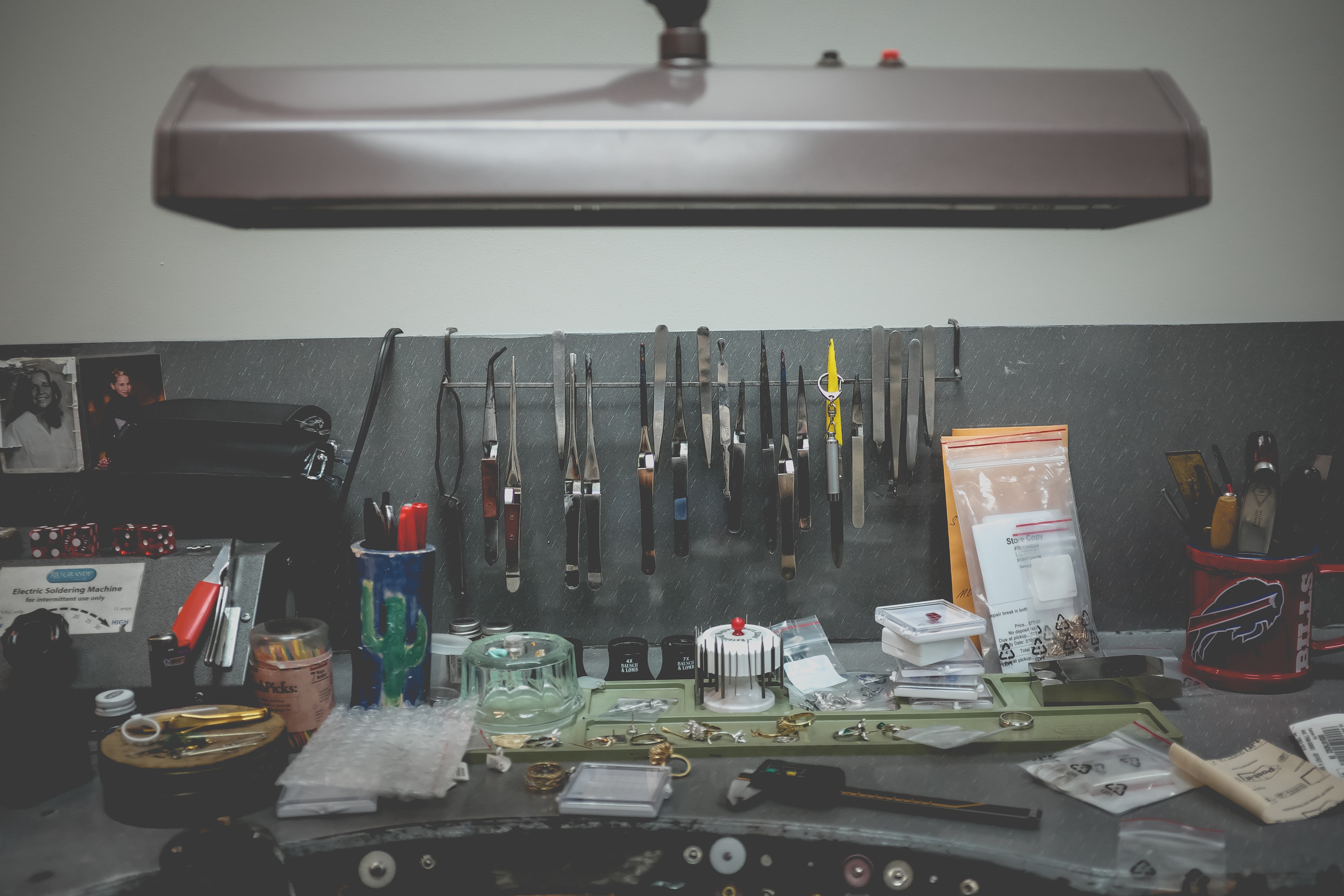The technology that goes into repairing jewelry may seem out of this world to the layperson, but when it’s broken down piece by piece, it’s significantly easier to comprehend. Today, we’re going to break down the various techniques that go into fixing and maintaining your favorite jewelry.
Resizing
Resizing a piece of fashion or bridal jewelry is one of the more common issues that jewelers and their repair teams encounter. A woman’s finger will change size on the daily, and after events like pregnancy, rapid size changes can be common.
For a smaller finger, your jeweler can add sizing beads or spring inserts — both very low-effort changes. However, if a ring has to be made larger, it will have to be resized with a new piece of metal (or by stretching, which can’t be done in pieces like eternity wedding bands). This must be done at the bottom of the shank, avoiding marks or inscriptions. A quality jeweler will not leave seams in the final work.
Setting Repair
Prongs are one of the easier types of settings to repair, since a jeweler can easily tighten a loose prong around your jewel. If your prongs are weakened or compromised, the jeweler can re-tip a prong with new metal or (carefully!) replace the head of your engagement ring or band.
Bezel-, tension-, and channel-set jewels will require that the metal be carefully worked back into place — or reinforced with a thin strip of metal. A jeweler will be able to push a burnished stone back into its setting, though a more exotic setting, such as invisible setting, may require an extremely experienced professional.
Restringing
You may not give much thought to what holds your favorite pearl necklace together, but it’s an important topic! To prevent metal from damaging significantly softer pearls, pearl necklaces are often strung together with silk. But silk warps and decays over time, which means that it has to be repaired at your trusted jewelry store.
The jeweler will have to sever the silk thread, ensuring that all pearls are accounted-for and safe afterward. The pearls will be strung onto a new length of silk, with the thread knotted after each pearl to keep them protected from falling or scratching each other.
Rhodium Replating
While women of all walks of life adore the cool purity of white gold, you may be surprised to know that white gold isn’t all that white. The alloying process of gold and other metals leads to a “vanilla-colored” metal. This “whitish gold” is further bleached thanks to it being dipped in an extremely thin layer of the precious metal rhodium.
However, this rhodium wears off over time, and the owner of white gold jewelry should consider rhodium replating a basic feature of jewelry repair. For a nominal fee, a jeweler will put a fresh new layer of the metal over your white gold to ensure it keeps completely white.
We Want to Hear From You!
Jewelry repair is as much a science as it is an art. It’s important to remember that you should only trust your treasures with a jeweler who has your trust and the trust of your community. If you’d like to give a shout-out to some expert jewelers, leave a comment below to let us know who’s doing your jewelry right.

My wife has been losing a lot of weight recently and her ring doesn’t fit anymore. It’s good to know that making a ring smaller is a pretty easy project for a jeweler. I’ll keep this in mind as I look for a quality repair service.